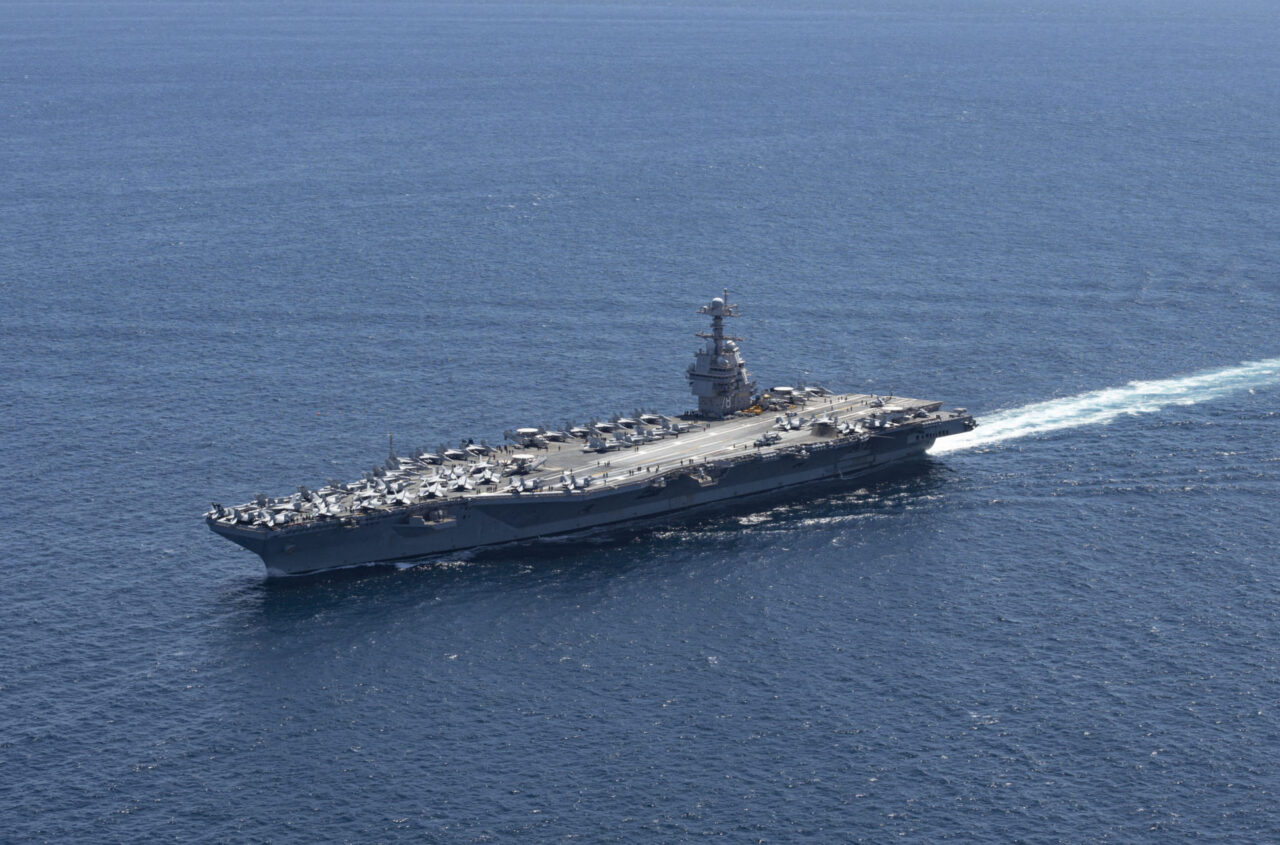The USS Gerald R. Ford, the US Navy’s newest aircraft carrier, is currently operating in the Mediterranean Sea as part of its scheduled deployment to the US European Command area of responsibility. The carrier, which is the lead ship of the Ford-class, recently transited the Strait of Gibraltar alongside several Spanish Navy warships, underscoring the strong alliance between the United States and Spain.
Cmdr. J David Garcia, commanding officer of the Spanish frigate ESPS Canarias, emphasized the significance of this operational collaboration, stating, “This operational activity in the Strait of Gibraltar shows the solid commitment of Spain as a strong Ally in a key access point to the Mediterranean Sea.” The Rota Naval Base, a strategic facility established in the 1960s, serves as a hub for joint operations, reinforcing the partnership between the two naval forces.
Current discussions are ongoing regarding whether the USS Gerald R. Ford will remain in the Mediterranean or proceed to the Red Sea. The United States has maintained a substantial naval presence in the Red Sea since Hamas’s invasion of Israel in October 2023. Notably, the USS Harry S. Truman, a Nimitz-class carrier, left the region in May 2025, and no other carrier strike group has since replaced it. The USS Carl Vinson Carrier Strike Group is currently operating in the North Arabian Sea.
Overview of the USS Gerald R. Ford
Named in honor of the 38th president of the United States, Gerald Ford (CVN-78) is the first ship of its class to enter active service. Launched in 2009 and commissioned in 2017, the USS Gerald R. Ford represents a significant upgrade over the aging Nimitz-class carriers that have served the Navy for more than 50 years. The US Navy plans to acquire a total of ten Ford-class carriers, gradually replacing the Nimitz vessels.
The Ford-class carriers incorporate advanced technologies that enhance operational capabilities. A key feature is the Electromagnetic Aircraft Launch System (EMALS), which replaces traditional steam catapults with an electromagnetic system utilizing linear induction motors. This innovation allows for a 25 percent increase in sortie generation and triples the electrical power available on board, making the Ford-class carriers more efficient and effective.
Another notable advancement is the new Advanced Arresting Gear, which further improves the carrier’s ability to launch and recover aircraft. The USS John F. Kennedy, the next Ford-class ship, is set to join the fleet, although the US Navy will continue to rely on its Nimitz-class carriers for deterrence strategies until then.
As the USS Gerald R. Ford continues its missions in the Mediterranean, its presence signifies not only a commitment to regional security but also the enduring partnership between the United States and its allies in Europe. The ongoing operations reflect a broader strategy to maintain a robust naval force capable of addressing emerging challenges in various theaters of operation.
This deployment reinforces the importance of naval collaboration in ensuring maritime security and stability, particularly in strategically significant regions.







































































